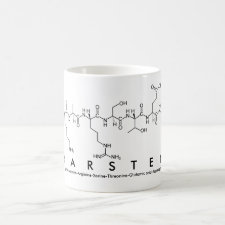
Authors: Panagiotopoulou M, Kunath S, Haupt K, Tse Sum Bui B
Publication date: 2017
Chapter title: Cell and Tissue Imaging with Molecularly Imprinted Polymers.
Page numbers: 399-415.
DOI: 10.1007/978-1-4939-6857-2_26
Book title: Synthetic Antibodies: Methods and Protocols
Editors: Tiller T
Publisher: Springer
City: New York, NY
ISBN: 978-1-4939-6857-2
Abstract: Advanced tools for cell imaging are of particular interest as they can detect, localize and quantify molecular targets like abnormal glycosylation sites that are biomarkers of cancer and infection. Targeting these biomarkers is often challenging due to a lack of receptor materials. Molecularly imprinted polymers (MIPs) are promising artificial receptors; they can be tailored to bind targets specifically, be labeled easily, and are physically and chemically stable. Herein, we demonstrate the application of MIPs as artificial antibodies for selective labeling and imaging of cellular targets, on the example of hyaluronan and sialylation moieties on fixated human skin cells and tissues. Thus, fluorescently labeled MIP nanoparticles templated with glucuronic acid (MIPGlcA) and N-acetylneuraminic acid (MIPNANA) are respectively applied. Two different fluorescent probes are used: (1) MIPGlcA particles, ~400 nm in size are labeled with the dye rhodamine that target the extracellular hyaluronan on cells and tissue specimens and (2) MIP-coated InP/ZnS quantum dots (QDs) of two different colors, ~125 nm in size that target the extracellular and intracellular hyaluronan and sialylation sites. Green and red emitting QDs are functionalized with MIPGlcA and MIPNANA respectively, enabling multiplexed cell imaging. This is a general approach that can also be adapted to other target molecules on and in cells
Template and target information: glucuronic acid, GlcA, N-acetylneuraminic acid, NANA
Author keywords: Molecularly imprinted polymers, MIPs, artificial antibodies, Glucuronic acid, Hyaluronic acid, Sialylation, Cell imaging, Tissue imaging, Quantum dots, Multiplexed imaging



Join the Society for Molecular Imprinting

New items RSS feed
Sign-up for e-mail updates:
Choose between receiving an occasional newsletter or more frequent e-mail alerts.
Click here to go to the sign-up page.
Is your name elemental or peptidic? Enter your name and find out by clicking either of the buttons below!
Other products you may like:
 MIPdatabase
MIPdatabase









